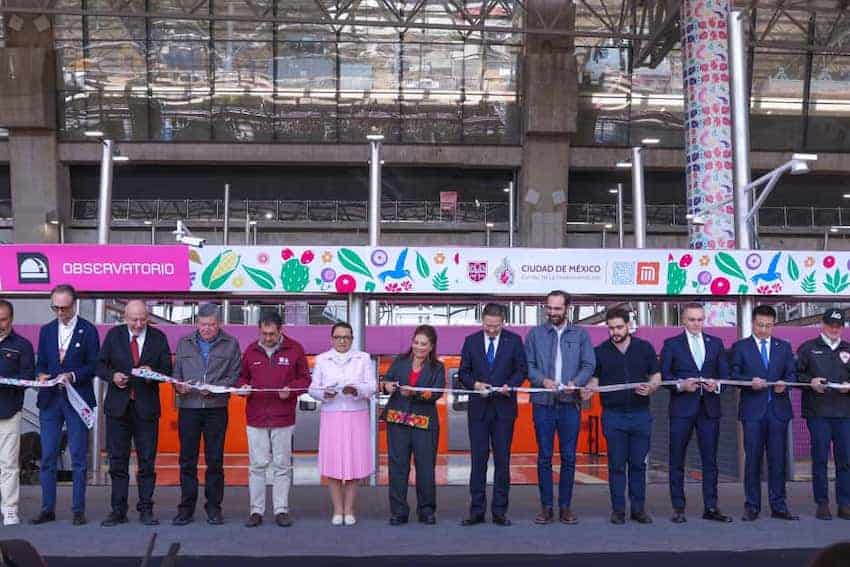Mexico City’s oldest subway line — Metro Line 1 — is completely operational again after long-delayed renovations were completed last week.
After re-inaugurating the three westernmost stations on Sunday, Mayor Clara Brugada called the restoration effort “the most important urban project in the country” and said it “extended the life of the line for another 50 years.”

“This project not only benefits those who live in Mexico City, but also represents a strategic advance in regional mobility,” she said, touting the state-of-the-art technology as a key part of the comprehensive facelift.
“Every last screw was replaced,” she said.
The modernization of Line 1 began on July 11, 2022, when Claudia Sheinbaum was mayor of Mexico City, and cost roughly 37 billion pesos (US $2 billion).
The nearly 19 kilometers-long metro line with 20 stations traverses the capital from east to west and is projected to transport approximately 850,000 passengers daily. Brugada said commuters will now be able to make a trip from the easternmost station of Pantitlán to the westernmost, Observatorio, in 40 minutes.
The Observatorio station — a modal transfer center — underwent a complete overhaul as it soon will become the terminus of the Toluca-Mexico City Inter-City Train. In addition to the Metro, the Observatorio complex already houses one of the capital’s four main bus terminals as well as a massive station for local bus service.
Guillermo Calderón, Brugada’s travel and transportation adviser, said the work included the complete rehabilitation of the entire subway tunnel and the renewal of 240 kilometers of track profiles, including rails, running surface and guide rails.
Hoy inauguraron la nueva Línea 1 del Metro, obra que inició cuando fui jefa de Gobierno de la Ciudad de México y dieron continuidad Martí Batres y Clara Brugada. Muchas felicidades a quienes la hicieron posible en beneficio de millones de capitalinos y visitantes. 👏🏽👏🏽👏🏽 pic.twitter.com/rLUuX8FyvO
— Claudia Sheinbaum Pardo (@Claudiashein) November 16, 2025
Approximately 200,000 tonnes of ballast (gravel) were replaced, as were 60,000 concrete sleepers (ties), 30,000 insulators and 64 track switches. The new electrical system includes 336 kilometers of cable trays, 2,000 kilometers of cabling and 40 kilometers of lighting, and rehabilitated power stations.
More than 200 km of fiber optic cable were installed for an LTE network, along with 80 kilometers of radiating cable. A new communications-based train control system was also installed.
Originally scheduled to reopen in 2023, Line 1 opened in stages from east to west.
Considered the backbone of the capital’s transportation system, Line 1 — which was first inaugurated in September 1969 — connects with nine of the other 11 metro lines that criss-cross Mexico City.
Brugada praised the work of the Chinese consortium CRCC, which oversaw the construction project.
Speaking at the inauguration ceremony, China’s Ambassador to Mexico Chen Daojiang also thanked CRCC and reiterated his country’s commitment to continue supporting projects that contribute to the development and well-being of Mexico City.
With reports from El Economista, La Jornada and Infobae
